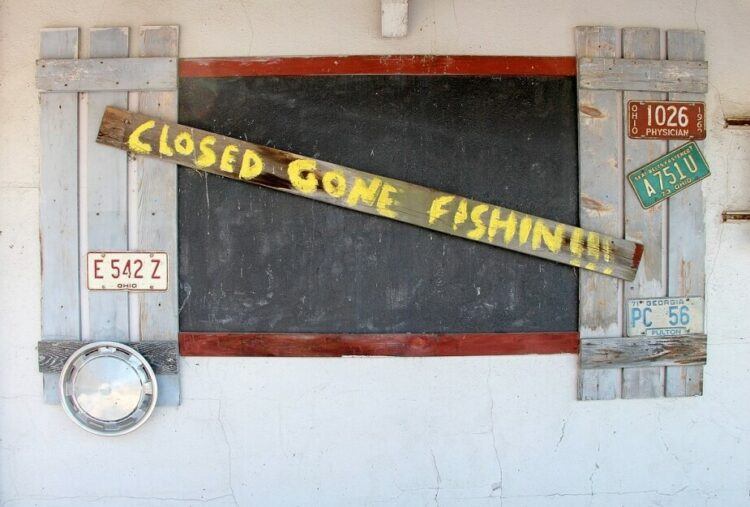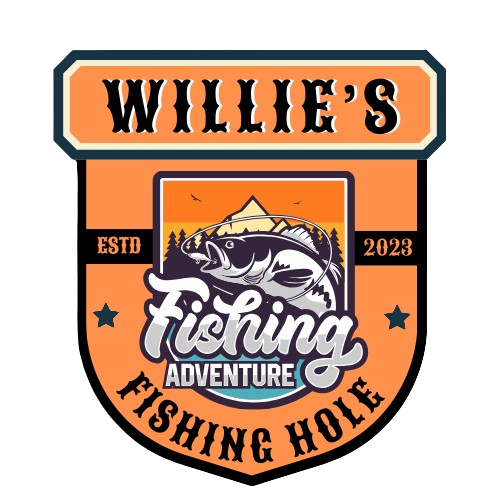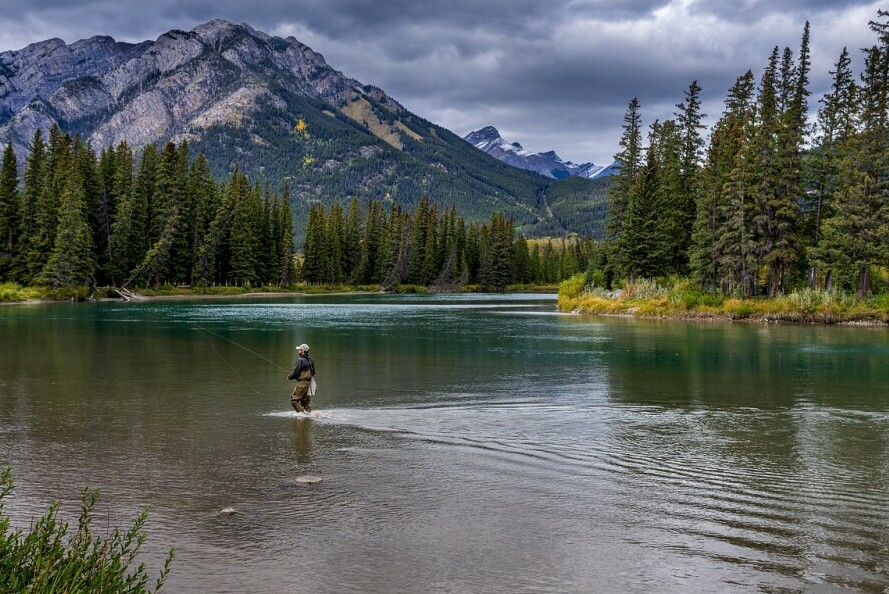Ahoy, fellow anglers! Welcome to The Art of Steelhead Fishing, where every cast is a step into the unknown, and every catch is a triumph. In this post, I am going to examine some secrets of steelhead fishing, from what type of gear you need to the perfect habitat and temperatures, ensuring you’re equipped and ready to dance with these chrome wonders.
Steelhead fishing is not just a hobby. Think of it like that one person you always wanted to dance with but never got the courage to ask them. When you fish for Steelhead, you are preparing to try and catch the most elusive and yet most exhilarating fish in the river systems. If you are ready to combine some skill, a little luck and a lot of patience, then grab your rod, tighten your line, and let’s put up the gone fishing sign!

Understanding Steelhead
Steelhead, are elusive, beautiful and powerful all in one. Some call them the chameleons of the water. Recognizing them from their trout and salmon cousins is the key to success. They are sleek with vibrant colours and will put on the best acrobatic show you have ever seen, leaving you breathless.
Many anglers consider them a Holy Grail and understanding their migratory patterns and behaviors is like holding the map to a hidden treasure in Pirates of the Caribbean. Captain Jack Sparrow himself would be fascinated with these creatures of the River World! So let’s follow the Captain and see what we can uncover.

Equipment and Gear
So you are ready to go Steelhead fishing but are you ready for battle? You better be because when you hook into a Steelhead, they are bringing you the fight of your life every time! It doesn’t matter how big they are, they are going to fight you like no other fish and it is going to be fun!
- Rod and Reel Selection:
Steelhead demand specialized gear. Select a medium-light to medium rod, around 11 to 14 feet, paired with a centre pin reel that balances the setup. The longer rod aids in casting distance and control, while the reel should have a smooth drag system. - Fishing Line:
Your choice of line is going to depend on the type of river fishing you are doing. You could use anything from Monofilament to Sinking line. You need to take into account the type of river you are fishing. For example a deep area of the river with fast currents may require a sinking line. Where a slow moving water flow and shallower areas, a floating line might be the best choice. If you are fishing areas with lots of weeds and twigs, a braided line might be best because of its low stretch. In all types you are most likely going to want to implement a Fluorocarbon leader. It is almost invisible under water and has a low stretch making it more abrasive resistant than Monofilament. - Tackle:
Your tackle box should be a treasure chest of essentials – varied hooks, weights, and floats. Experiment with different sizes and styles to match the ever-changing conditions. Remember you only want the essentials because if you are wading out to your favourite fishing hole, you can only carry so much in and on your vest. - Clothing and Accessories:
Dress like a fishing wizard! Waders, flotation vest, sturdy boots, and layered clothing are your armor against the elements. Don’t forget a wide-brimmed hat and polarized sunglasses for added comfort.
Steelhead Habitat and Behavior
The old saying goes, if you can’t beat them, join them. Basically that is what you have to do when fishing for Steelhead. You need to learn how they think and become The Sherlock Holmes of Steelhead fishing.
- Preferred Environments:
Seek out riffles, runs, and pools in rivers and streams. Steelhead love structures like rocks and fallen trees, offering them shelter and ambush points. - Seasonal Movements:
Steelhead are on the move throughout the year. In spring and fall, they ascend rivers for spawning. Understanding these patterns is like having a backstage pass to their annual migration concert. - Factors Influencing Behavior:
Water temperature, flow, and clarity play pivotal roles. Cooler temperatures and moderate flow are often prime conditions. Be a weather whisperer to predict their movements accurately.
Fishing Techniques
My one suggestion here would be to try and learn one technique and learn it well before trying to master them all. Centrepin fishing with a float and shooting pattern is different from drift fishing and different again from fly fishing. They all work so find what fits you.
- Drift Fishing:
Rig up with a sliding sinker, swivel, and leader. Experiment with roe, worms, or artificial baits. Drift your offering naturally along the riverbed. This is sometimes referred to as bottom bouncing and with the right setup can be very successful. With this rig you attach your sliding sinker above the micro swivel. Then attach anywhere from a 12 to 24 inch Fluorocarbon leader to the other side of the swivel. Hook size will be dependent on the bait of choice. Regardless you want the bait to float naturally above the bottom so you may have to use a needle to “blow” up the worm and be certain your roe bag contains “floaties”. Artificial baits have natural buoyancy to them. - Centrepin Fishing:
Equip yourself with a centrepin reel for precision control. Pair it with a float and experiment with beads, spawn sacs, or artificial eggs. When you are float fishing you need to match the float to the type of shooting pattern you are using and the flow of the river. Fast deep rivers require different float weights and lengths opposed to slow shallow rivers. Raven produces a great little book on this topic. - Fly Fishing for Steelhead:
Choose large, flashy flies and practice the art of casting. Swing your fly through likely holding spots, enticing strikes from steelhead in a visual and exhilarating manner. Fly fishing is an art all in itself and I will not delve too deep into it in this post. Suffice to say, that depending on the river this is a goto setup for a lot of experienced anglers.
Location and Timing
Just like no two people are created equal, the same can be said for river systems. You need to scout each river when preparing to fish it for the first time to unlock the hidden gems.
- Best Rivers and Streams:
The Pacific Northwest, Great Lakes region, and select rivers in the Northeast are renowned for steelhead. Research your local waters to find the hidden gems. There are lots that no one even knows about. This is where your detective skills come to the forefront. - Seasonal Migration Patterns:
Spring and fall are primary steelhead seasons. The Spring run is typically associated with their move upstream to spawn. The Fall is the return of the Steelhead from their Summer hiatus from the rivers. Early mornings, late afternoons and even overcast days are peak feeding times as Steelhead are more active during low-light conditions making these times the most productive from a fishing aspect. - Ideal Water Temperatures:
Aim for water temperatures between 40 to 55°F (4 to 13°C). It is important to see stable water temperature with no extreme variations. Steelhead will become inactive with large temperature fluctuations.- 40-45°F (4-7°C): At the lower end of the spectrum, steelhead may become less active, but they can still be caught. Consider slowing down your presentation and using techniques that entice sluggish fish.
- 45-50°F (7-10°C): This is a prime temperature range for steelhead activity. They are more likely to be actively feeding and responsive to various fishing techniques.
- 50-55°F (10-13°C): As the temperature approaches the upper limit, steelhead may become more aggressive. This is an excellent range for both fly and conventional anglers.
- The Best Weather Conditions:
- Overcast Days: Since there is lower light, Steelhead tend to feel more secure and are less elusive in this condition. They will risk venturing our into some shallow water and become more fearless.
- Rainfall: This is quite significant and becomes a real game-changer. If you are a fair weathered angler, than Steelhead fishing might not be right for you. A good rainfall does a lot when it comes to river fishing, from increased water flow to muddy water. Steelhead become less wary in these conditions as the higher water and muddy conditions provide cover for them.
- Consistent Water Flow: A river that has its flow change often, either up or down, is not a desired result when fishing for Steelhead. They prefer a consistent flow which makes them feel comfortable moving about the system.
- Wind: Lastly, a gentle breeze can work in your favour but, it can also make it difficult to cast if it is too high. Make the wind your friend. Cast with it opposed to against it. This will give you much better control when casting.
Conservation and Ethical Fishing Practices
Always be mindful that we want the next generation to be able to enjoy this great past time of fishing. That means abiding by guidelines and practicing conservation. Leave your spot cleaner than you found it.
- Catch-and-Release Guidelines:
Handle steelhead with care, minimizing stress. Use barbless hooks for easier releases. Support conservation efforts and follow local regulations. See my Resources page from some local guidelines. - Responsible Handling of Fish:
Wet your hands before handling to protect their sensitive slime coat. Avoid dropping or dragging them on dry surfaces. - Leave-No-Trace Principles:
Respect the environment – pack out what you pack in. Ensure your fishing adventure leaves minimal impact on the delicate ecosystems. No stray hooks or line that can be harmful to other animals or anglers that follow you to that spot.
Safety Considerations
With the ever changing environment for a river system, be sure to scout it out the first time you fish it. If the water levels have risen be aware of increased underwater hazards and currents. River fishing can be fun and sometimes sharing your spot with another is not what you want to do but, fishing a river with a partner is always safer and encouraged. There is enough fish for everyone!
- Appropriate Safety Gear:
Wear a life jacket or personal flotation device when wading. This should be a requirement and not an option. With all the self inflating or manual inflating life vests on the market now you should not have an excuse not to wear one. Non-slip wading boots provide stability on slippery rocks. Carry a wading staff for additional support. - Understanding River Dynamics:
Be aware of currents, undertows, and potential hazards. As the water levels change in a river system, so to do the currents and the visibility of underwater hazards. Use a wading belt to prevent water from entering your waders. Believe me, if your waders fill up with water you will know it once you get to shore. It will be like trying to pull your feet out of cement! - Weather Considerations:
Check weather forecasts before heading out. Dress in layers to adapt to changing conditions. Always prioritize safety over the catch of the day. While fishing in the rain can produce a different catch, fishing when it is lightning out can produce a bad outcome.
Final Thoughts
Steelhead fishing can be one of the most rewarding. It offers endless excitement when the fish are biting and gives you a different fight every time. As you embark on your steelhead fishing odyssey, remember that each adventure is a unique story waiting to be told. Sometimes it will be like a slow country 2 step dance and others, it will be the Orange Blossom Special, getting faster with every note making your heart race with excitement as you yell “Fish On!”
Cherish the camaraderie, embrace the challenges of the river and the Steelhead, and savor the moments when the line tightens. Happy fishing, adventurers – may your tales be as legendary as the silver treasures you seek! Tight lines and tight bonds! Enjoy learning The Art of Steelhead Fishing!
If you have a fish story you would like to share, we would love to hear from you. Drop us a line below.

